The 2024 model year is already upon us. Here is a glimpse of nine significant new models that are just going on sale or will be available by the end of 2023.
Buick Envista
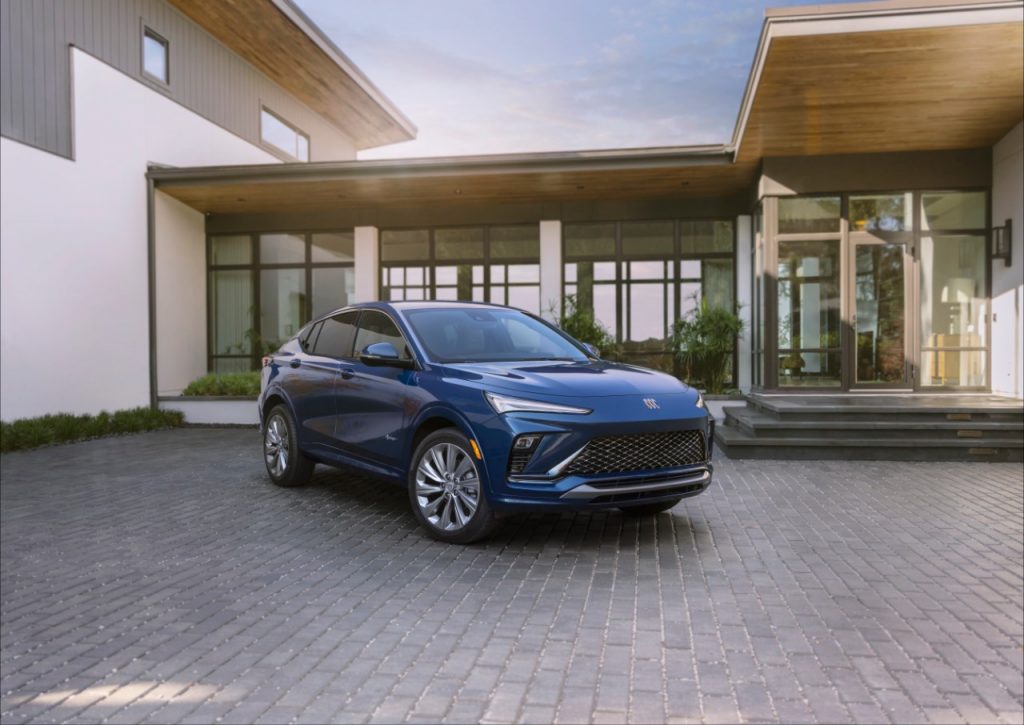
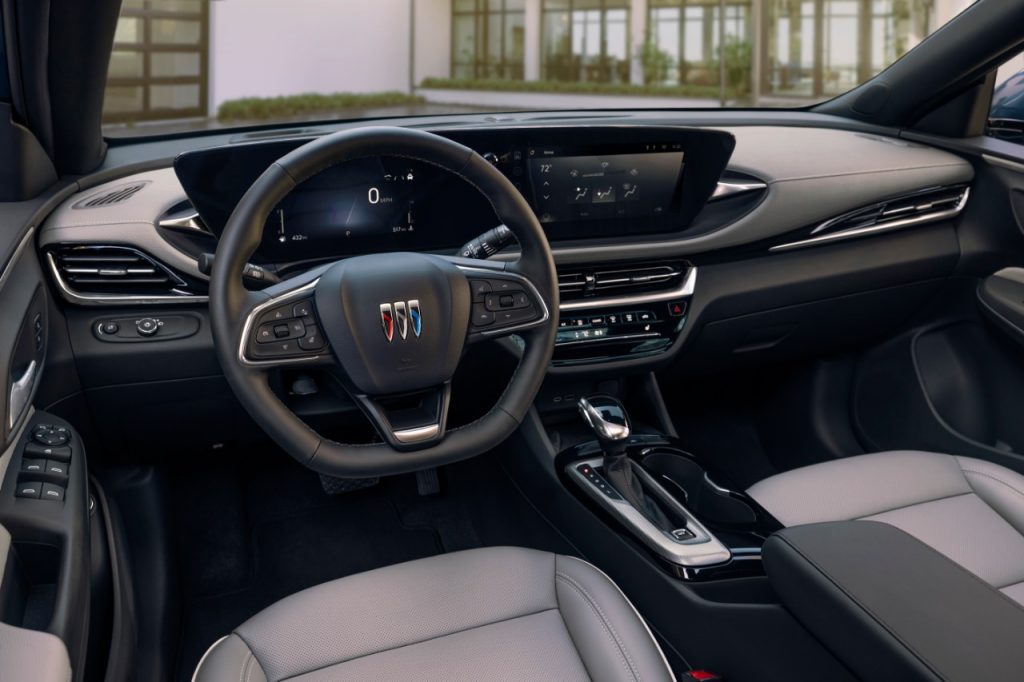
Twin to the Chevrolet Trax, the new Envista replaces the very compact Encore as Buick’s least expensive car. It’s considerably larger, with a 140 mm (5.5 inch) longer wheelbase, and is 361 mm (14.2 inches) longer. Buick has effectively abandoned the successful micro-crossover segment the Encore thrived in with the new model.
The Envista is the first production Buick to reflect Buick’s new styling that saw the light of day on the Wildcat concept car that debuted at major auto shows during 2023. The front features very slim headlights which are located above a large, low-mounted grille, flanked by indents in the front fascia that contain fog lights and some small decorative embellishments. The rear end, like the front, features very slim lighting units and very nice detailing. Like many new vehicles, there are no conventional gauges inside but there is a vertically-shallow and wide computer tablet. On premium trims, climate is controlled via a multi-buttoned panel, with lesser trims employing buttons and knobs. The rest of the cabin looks clean, relying more on shape and colour than applied ornamentation. With its size transition from the micro to the compact segment, cabin space has increased significantly, so much so that the Envista is now essentially the same size as the Encore GX, which should eventually make the latter redundant.
Like the related Chevrolet Trax, the new Encore is powered exclusively by a 1.2L turbo triple that is rated at 136 horsepower, 19 less than the 1.4L turbo four that powered the Encore. A very small and complex turbo engine makes sense in jurisdictions where cars are taxed on engine size or CO2 output, but it is a bizarre engine choice for North America. The related 1.3L turbo triple powering the Buick Encore GX is not particularly quick or economical, and also sounds too much like a motorboat to be suitable for what has become a very expensive, luxury vehicle. Power reaches the wheels via a conventional six-speed automatic transmission.
A full active safety suite, including forward collision warning, lane departure, blind spot and rear cross traffic warnings, a lane keeping assist system and active cruise control, is standard.
Chevrolet Blazer EV
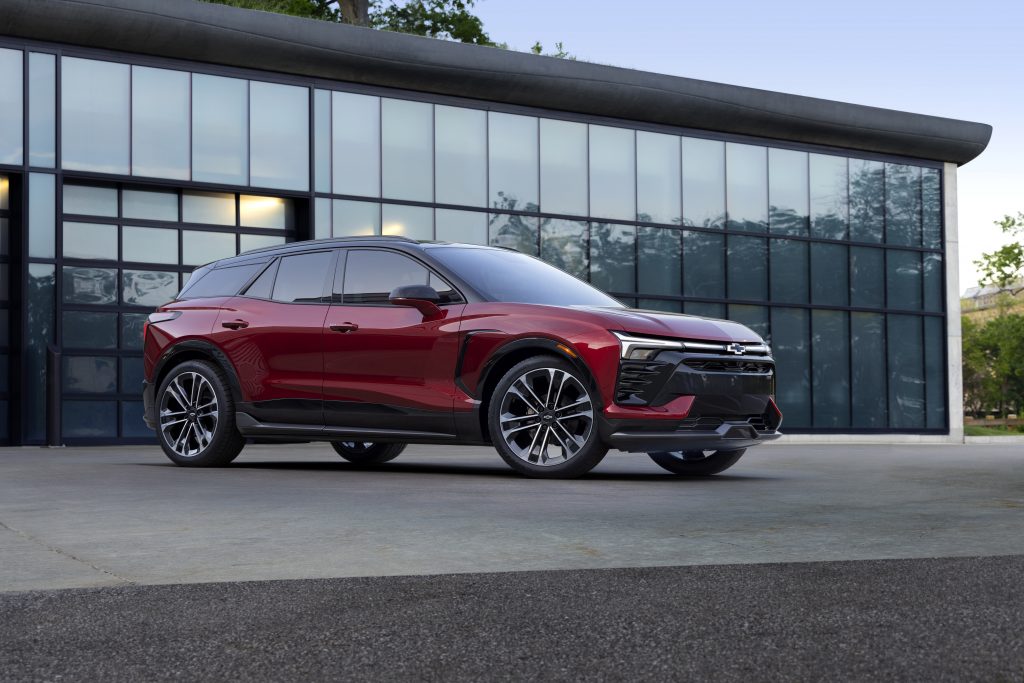
The Blazer EV is in no way related to the conventional Blazer and likely signals GM’s intention to phase out the conventional gasoline model at some point in the future in favour of the battery electric version (BEV). The electric Blazer is a derivative of GM’s scalable Ultium BEV platform that will underpin many GM vehicles in the next few years. The Blazer EV is assembled Mexico. At 3094 mm (121.8 inch), the wheelbase is 131 mm (5.2 inches) longer than the conventional Blazer.
The Blazer EV is powered by a 100 kW battery pack that can provide 400 kilometers of range on the 1LT trim, 470 kilometers on the 2LT and up to 515 kilometers on the rear-wheel drive variant of the RS. The 1LT trim offers front-wheel drive exclusively. Front-wheel drive and dual-motor all-wheel drive are available on the 2LT; the RS trim can be had with any of the three drive systems. Chevrolet is quoting insanely quick acceleration times of around four seconds from 0 to 100 kilometers for the eventual SS trim. There doesn’t seem to be a version with what would be considered “normal” horsepower for a gasoline vehicle, with performance similar to the conventional V6 Blazer.
The small grille sits atop a large filler panel that would be an air intake to cool the radiator on a gasoline car but is only a patterned styling element. The side profile features so many competing styling elements that the look is incoherent. The rear styling of the Blazer EV is nicely rendered and visually the best aspect of the design.
The cabin, like the exterior, is a bit overwrought and dramatic. The driver faces a crisply-marked digital gauge pod, to the right of which is a massive infotainment screen. With its long wheelbase, cabin space should be ample in the Blazer EV. Cargo space may not meet customer expectations.
Forward collision warning, autonomous emergency braking, a lane keeping assist system and a lane departure warning are standard. Blind spot and rear cross traffic warnings and active cruise control will likely be optional. Chevrolet has posted some initial price points; posted pricing commences at $55,000.
Chevrolet indicated that deliveries start in summer 2023, but GM’s recent launches of BEVs have been chaotic and actually receiving deliveries is likely a long way off.
Chevrolet Colorado & GMC Canyon
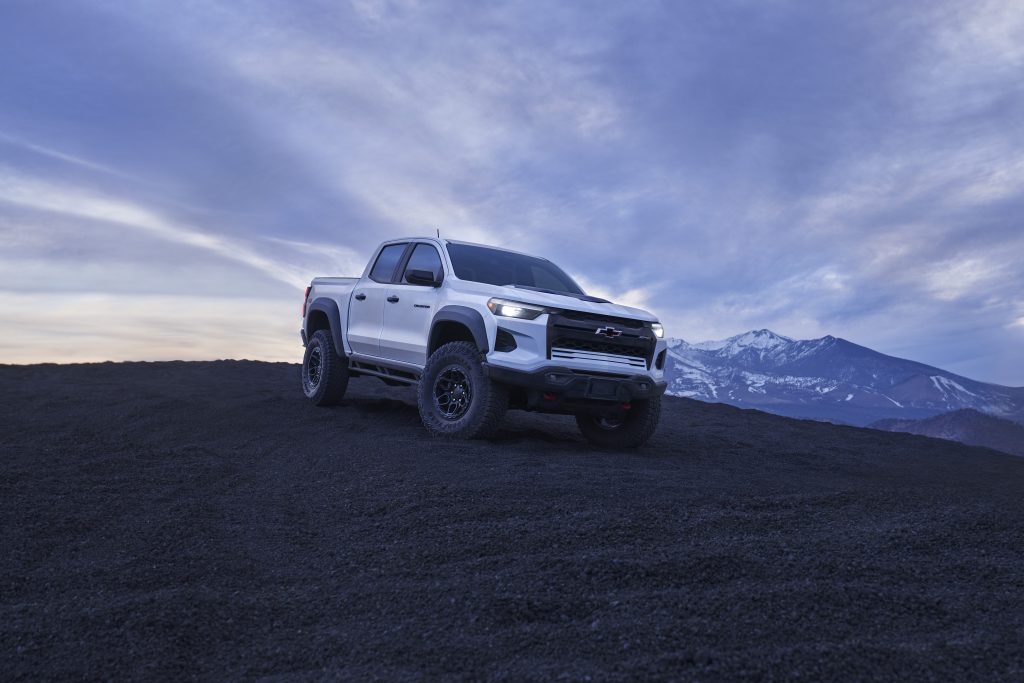
After eight years, GM has finally updated the Chevrolet Colorado and its companion vehicle, the GMC Canyon. So far, only a crew cab, short-box model has been announced. One engine, a gasoline 2.7L turbo four with three outputs, is offered on the Colorado, with only the most powerful variant available in the Canyon. Power reaches the wheels via an eight-speed automatic transmission. The vast majority of variants feature four-wheel drive.
Standard active safety equipment on both nameplates includes forward collision warning, autonomous emergency braking, a lane departure warning and a lane keep assist system. The Google Assistant audio concierge is a new offering for 2023.
The styling of the new Colorado bears a resemblance to its Silverado showroom mate. Inside, the truck looks more contemporary. The driver faces a TFT gauge package in a slightly-hooded Camaro-like, binnacle. To the right of the gauges, taking pride of place at the top centre of the dash, is a large, free-standing infotainment screen. The dashboard features substantial, rectilinear, styling. The high-mounted centre console butts into the dash with no conventional centre stack. Despite the long wheelbase, legroom in the rear seat is absurdly tight. Like the innovative Ford Maverick, GM’s new pickup features slots in the cargo bed to permit owners to fabricate their own cargo-locating solutions and offers a 45-degree tailgate open angle that can let longer items rest on the wheel wells in the cargo bed and partly open tailgate. Moulded recesses in the front of the tailgate liberate some space for motorcycle wheels. The flanks of the Canyon are similar to those of the Colorado but the front is fussier. Cabin materials on the top end Canyons are more luxurious than those in the Colorado but there are still a lot of hard plastic surfaces visible.
Pricing
Colorado: Four-wheel drive is standard on all but the Work Truck trim, where it is a $3900 option. So far, there is only a crew cab body style with a short cargo box. Forward collision warning, autonomous emergency braking, a lane departure warning and a lane keeping assist system are standard. Blind spot and rear cross traffic monitors as well as active cruise control, are optional. The Canyon, powered exclusively by the high-output 2.7L turbo with 315 h.p. with four-wheel drive is priced higher that the Colorado. Available collision avoidance features are the same as the Colorado.
Chevrolet Equinox BEV
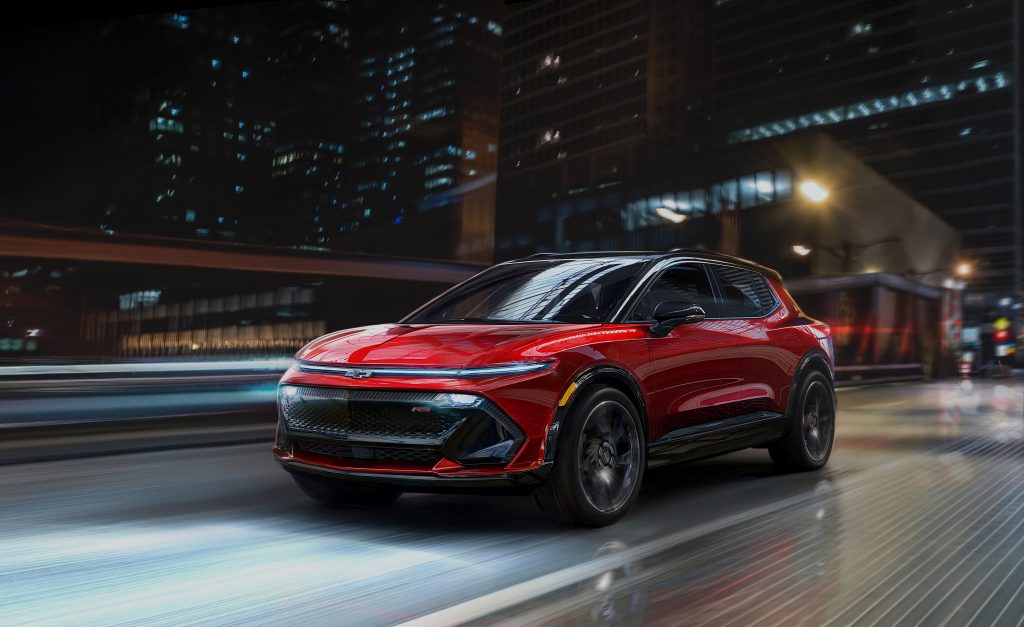
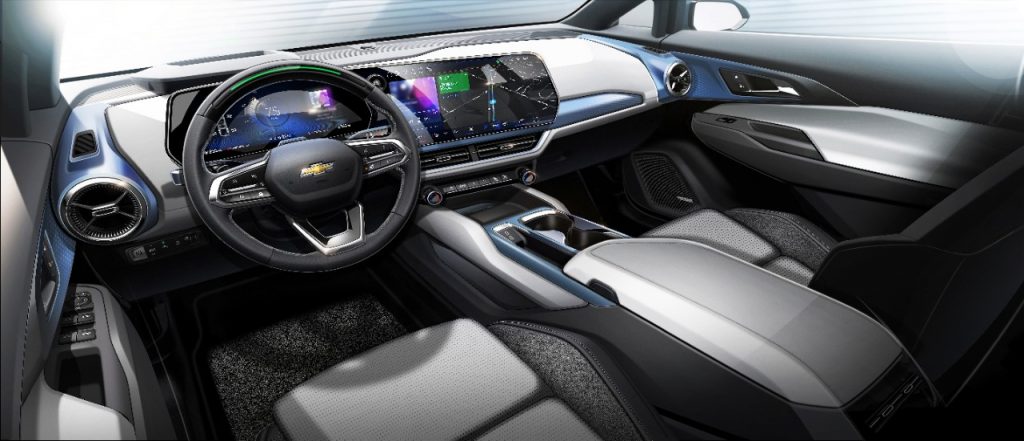
Based on GM’s Ultium architecture, the Equinox BEV replaces the Chevrolet Bolt as the cheapest vehicle in GM’s BEV range.
Compared with the conventional Equinox, the Equinox BEV is built on a 229 mm (9 inch) longer wheelbase, and is 185 mm (7.3 inches) longer overall. It’s also wider and lower.
Unlike many electric cars that feature insane levels of horsepower, the base Equinox BEV, the front-wheel drive only 1LT is powered by a motor that produces 210 horsepower, 242 lb. ft. of torque and up to 400 kilometers of range. The front-wheel drive variant of the 2LT has the same range as the 1LT; the dual-motor all-wheel drive system can travel up to 450 kilometers between charges. The dual-motor 3LT trim has a range of 450 kilometers. GM claims the Equinox BEV can take around 110 kilometers worth of charge in 10 minutes when hooked up to a 150 kW Level 3 charger, which may be hard to find outside Quebec, as most Level 3s charge at 50 kW.
Unlike the fussy and hyper-dramatic Blazer BEV, the Equinox BEV is an expression of restrained elegance. A high-mounted, slim light bar extends to the edges of the car to form the headlamps. The flanks bear enough surface interest to be dynamic but don’t venture into the “should have lifted the pen” excesses of the Blazer BEV. Like the front, the rear taillights are connected by a slim light bar.
The driver faces a crisply-marked, configurable gauge pod. The massive infotainment screen is nestled so tightly up against it that it looks like one surface. Except for the On-Off and Volume controls, all infotainment functions are handled via the touch screen but climate is controlled via conventional knobs and pushbuttons. The cabin looks pleasant with some attractive two-tone combinations and bright accents. Like a number of less-expensive Chevrolets, there are likely to be a lot of hard plastic surfaces.
Active safety equipment is comprehensive, with standard forward collision warning, autonomous emergency braking, blind spot, rear cross traffic and lane departure warnings, rear auto braking and a lane keep assist system. Active cruise control is optional.
2024 Ford Ranger
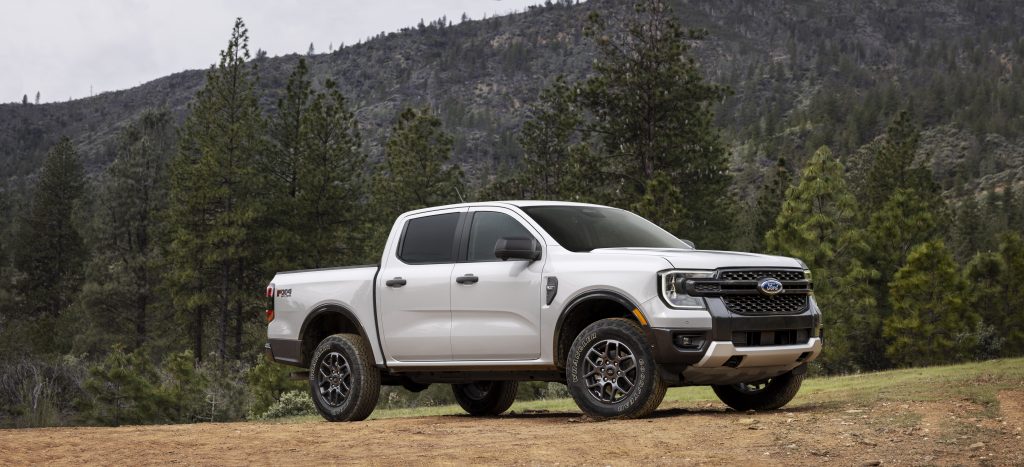
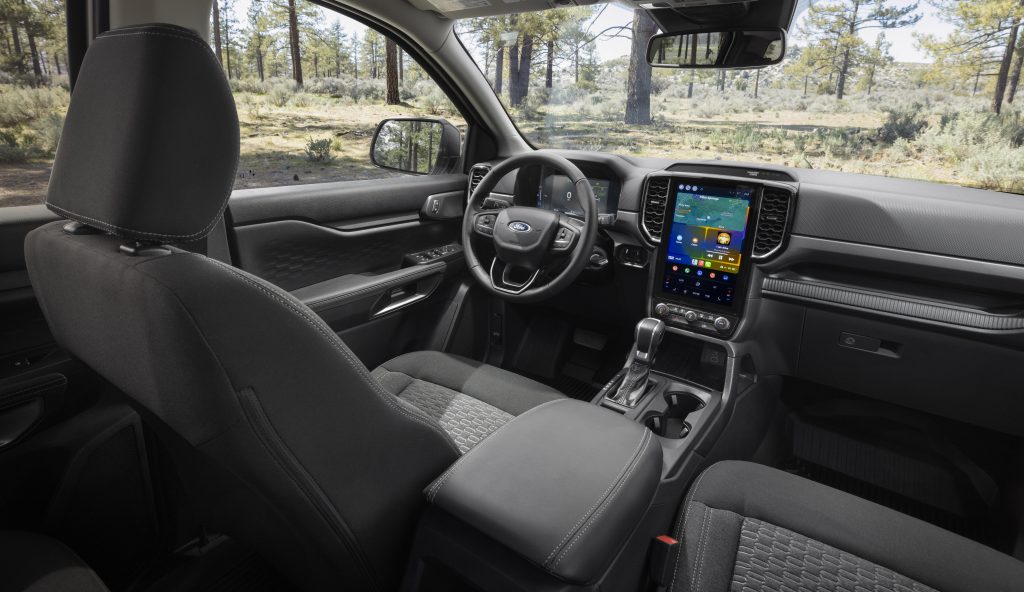
After just five years on the market, Ford has totally renewed the Ranger for 2024.
Comparing the crew cab versions of both generations, the new Ranger, which retains its conventional body on frame layout, is built on a 47 mm (1.8 inch) longer wheelbase, is about the same length and width as before and marginally taller. The extended cab body style is equipped with a six-foot-long cargo box and the crew cab model has a five-foot box. The Ranger will compete against the redesigned Colorado and Canyon trims from General Motors.
For the Canadian market, the Ranger returns exclusively with all-wheel drive. The 270 horsepower, 2.3L turbo four returns as the standard engine, but can be supplanted by a 2.7L-V6 turbo rated at 315 horsepower and a massive 400 lb. ft. of torque. A 10-speed automatic transmission is the sole offering.
Like many all-new Ford pickup trucks, the styling is so close to its predecessor as to go unnoticed by all but ardent fans. On the inside, the new Ranger features a traditional, blocky, Ford truck design. The driver faces a crisply-marked TFT gauge package. The dash centre stack is dominated by a large vertical infotainment screen on mainstream trims, with higher-end units employing an even larger screen. Ford’s Sync4A infotainment interface is new on the Ranger. Cheap cabin fittings were a negative on the last Ranger but this new one looks better, at least in photos. With similar dimensions, cabin space of the new Ranger should be comparable, with unimpressive legroom for rear seat passengers. The cargo bay can be lit by a variety of available L.E.D. lights and all but the lower XL trim feature a 400-watt power point in the tailgate.
Forward collision warning and autonomous emergency braking are standard. Options include blind spot and rear cross traffic warnings, a lane keeping assist system and active cruise control.
2024 Hyundai Kona
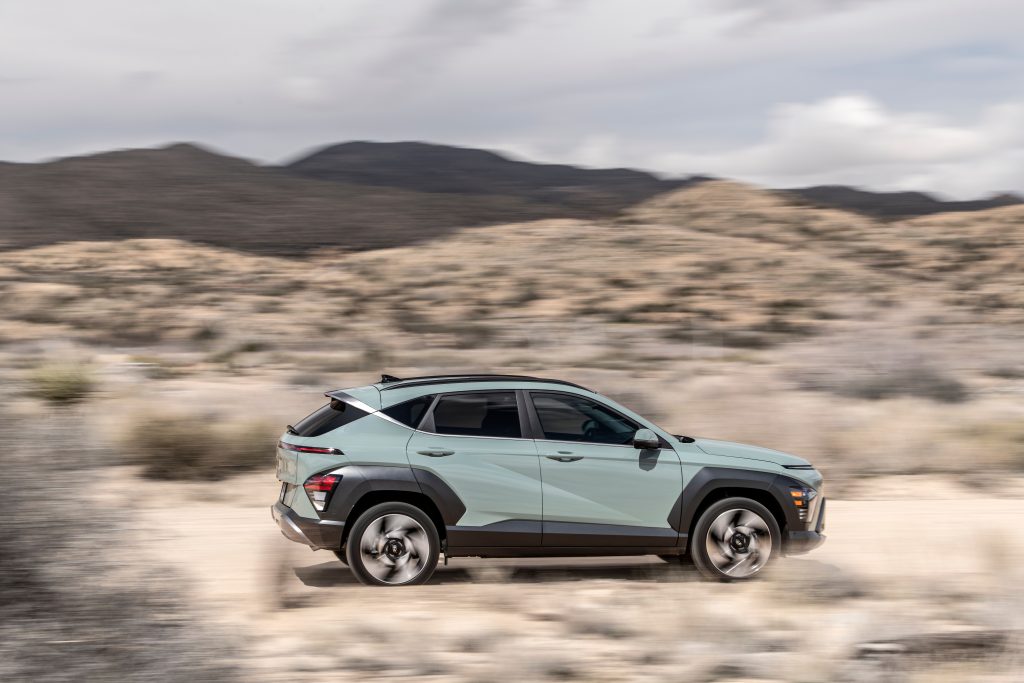
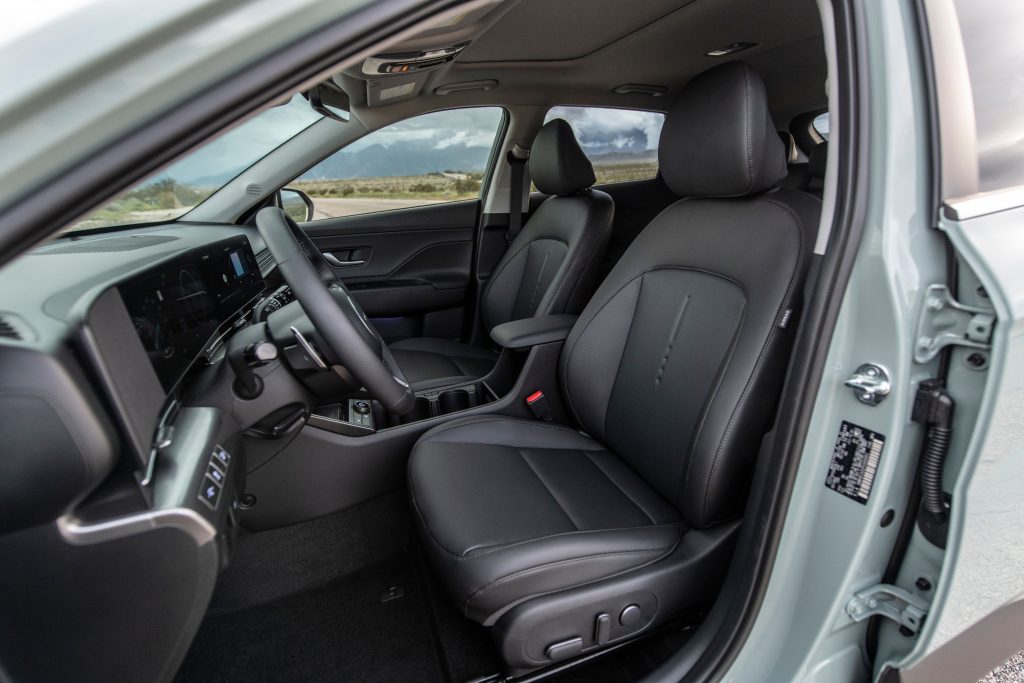
After six years on the market, Hyundai has renewed its very successful Kona. Built on a 60 mm (2.4 inch) longer wheelbase, the second-generation Kona has stretched significantly and is 145 mm (5.7 inches) longer than before, marginally wider and roughly the same height. This growth may rectify two limitations of the original Kona, which were tight rear seat legroom and limited cargo space.
Front end styling is interesting. A slim light bar sits above a massive lower air intake, which is flanked by boomerang-shaped bright elements that are met by the front wheel well extensions that house the headlamps. The side silhouette echoes the styling of the first Kona with the addition of the impressed “Z” motif first seen on the Ioniq 5 BEV, and is visually incoherent. Both the boomerang frontal styling themes and the odd inset section of the tailgate are also featured on the Kia Sportage, which is about the first time the two brands have shared styling elements.
Hyundai and Kia are masters at straightforward minor controls, with simple knobs and buttons to manipulate climate and audio functions. Like the Ioniq 5, the dashboard of the new Kona reflects angular, 1980s design conventions.
Two conventional engines, a 147 horsepower 2L four and a turbocharged 1.6L four with 190 horsepower, return for 2024. The 2L sends power to the wheels via a CVT, with the turbo hooked up to a conventional eight-speed automatic. Front-wheel drive is standard with all-wheel drive optional on entry-level models and standard on fancier ones. The electric Kona returns for 2024. Rated at 201 horsepower, the Kona electric is powered by a 64.8 kWh battery pack. Estimated range under ideal conditions is expected to be up to 570 kilometers. Using a Level 3 charger, Hyundai claims the Kona BEV can go from a 10 percent to an 80 percent charge in 43 minutes. Premium trims will offer a Vehicle-to-load function that lets the car power equipment outside the car. One-pedal driving, called i-Pedal, is featured on the BEV.
Toyota Grand Highlander
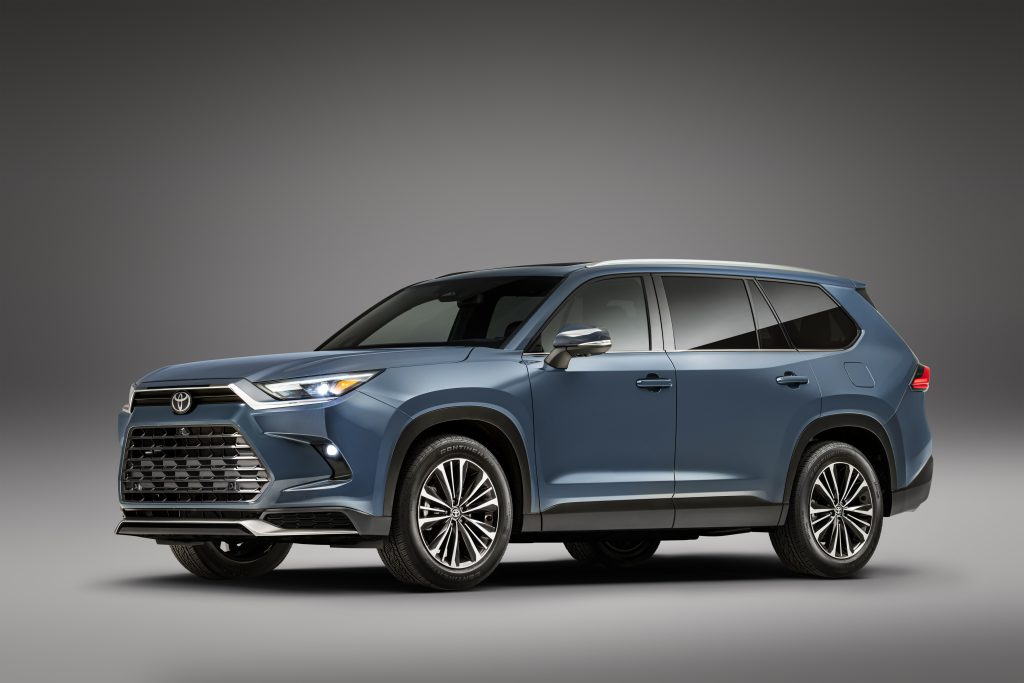
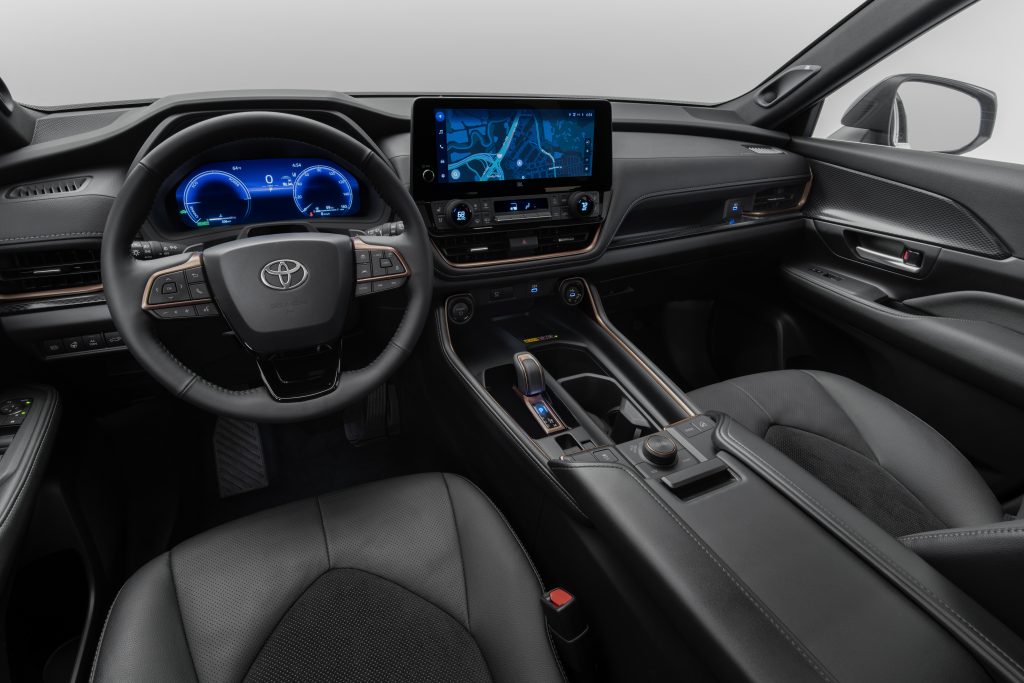
Built on Toyota’s versatile TNGA-K architecture, the new 2024 Toyota Grand Highlander is a substantial 525 mm (20.7 inches) longer, and wider and taller than the current Highlander. Its dimensions place the Grand Highlander in the XXL crossover category along with vehicles like the Hyundai Palisade, Kia Telluride, Ford Explorer and the Traverse–Enclave-XT6 triplets from GM. This may signal a realignment of the Toyota crossover lineup which could result in a larger RAV4 and the elimination of the mainstream Highlander when both those vehicles renew. It’s all part of the extraordinary upsizing of vehicle sizes and weights currently occurring in the marketplace.
A slim grille is flanked by low-profile headlights, accompanied by a gigantic lower air intake. The extremities of the front fascia are pierced by the indentations that are currently popular. Rear styling is clean, with high-mounted tail lamps, and a lower black styling element that sits above a bright accent. The side profile is very sleek, with surface tension created by shape rather than applied ornamentation.
The driver faces a configurable TFT gauge package with much crisper graphics than usually seen in a Toyota. A massive, free-standing infotainment screen dominates the top-centre of the dash. The infotainment screen is equipped with the new Toyota infotainment logic system with a single on-off-volume knob, and a touch screen menu on the left of the screen. Experienced in the recently updated Corolla, actions needed to manipulate the infotainment functions like altering sound settings and saving radio presets, are a complete mystery. Like the RX from Lexus, the navigation graphics of the infotainment screen are so faint as to be unreadable. The substantial front seats are separated by a very high and wide centre console that may make front passengers feel hemmed in. The middle-row seat looks very roomy and the even the third-row seat looks to have enough room for smaller adults on a moderate length trip. Cargo space, often a sore point with the average-size three-row crossovers when the third seat is up, looks reasonable.
The Grand Highlander can be powered by a variety of engines seen in other Toyotas. Most common will likely be the same 265 horsepower, 2.4L turbo four found under the hood of the conventional Highlander. The mainstream hybrid model is powered by a 2.5L four and electric motor that is rated at 247 horsepower, which may be a bit light for such a massive vehicle. The top model, the Hybrid Max, combines the efforts of a turbocharged, 2.4L gas engine and the hybrid system to create a stout 362 horsepower. All-wheel drive is standard. The 2.4L turbo features a conventional “on-demand” all-wheel drive system. The rear wheels on the hybrid are driven electrically. The all-wheel drive powertrain of the Hybrid Max range-topper distributes the power from the turbocharged gas engine to the front wheels via a conventional six-speed automatic transmission and an electric motor, with the rear-wheels driven by a powerful electric motor.
The Toyota Safety System 3.0 incorporates forward collision warning, autonomous emergency braking, lane departure, rear cross traffic and blind spot warnings, steering assist and lane keep assist systems as well as adaptive cruise control as standard equipment.
Pricing
With the XLE grade being the least-expensive model, there is really no Grand Highlander base model and even the most basic version of the car is a premium-priced product. With heated, electrically-adjustable front seats, wireless cellphone charging and an auto-dimming rearview mirror, the XLE trim is nicely equipped. Stepping up to the Limited adds power-folding door mirrors, fog lights, a dual-panel sunroof, leather seating, ventilated front seats, a memory system, a JBL-branded audio system, front and rear parking sensors, rain-sense wipers, puddle lamps and a 360-degree camera, but is overpriced. Opting for the 2.5L hybrid powertrain adds $3300 to the price of the XLE and $3500 on the Limited.
Subaru Crosstrek
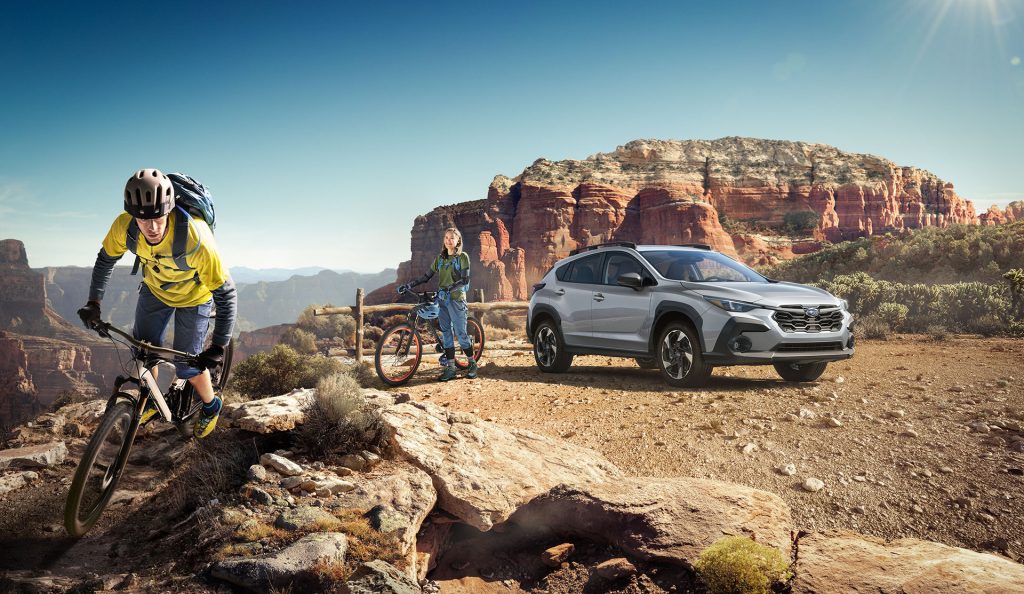

The 2024 Subaru Crosstrek receives a structure with 10 percent greater torsional rigidity, a new dashboard featuring Subaru’s massive, vertically-oriented touch screen incorporating all infotainment and climate functions, softer seats, an enhanced Eyesight system and an electric brake booster. The 2L and 2.5L flat fours return, as does the CVT automatic, which is the sole transmission on offer for 2024.
The Crosstrek has been a huge success for Subaru in Canada, outselling the Impreza, the car on which it’s based, by a significant margin. Deliveries have begun this summer.
Pricing
Subaru has added additional standard equipment including alloy wheels which have moved the vehicle upmarket for 2024. EyeSight, Subaru’s active safety suite, and automatic transmission, are standard this year. The base Convenience trim is equipped well enough for many buyers. Stepping up to the Touring trim adds a rear USB port, two additional speakers, fog lights, blind spot and rear cross traffic monitors, touch entry and keyless go, upgraded fabrics and a variety of smaller features, and is priced to reflect the value of the additional equipment. The Onyx trim, which includes wireless cellphone charging, a cargo blind, a sunroof, auto braking in reverse, alloy pedals and a power seat also includes the bigger 2.5L engine, making the upgrade a bargain. The range-topping Limited model offers leather seating, a Harman-Kardon audio system and is a reasonable value if you want its features.
Kia EV9 BEV

The Kia EV9 BEV is a large, three-row, full-electric vehicle based on the Hyundai E-GMP BEV platform.
Compared with the conventional Telluride, the EV9 is built on a 200 mm (7.9 inch) longer wheelbase but essentially casts a similar shadow on all exterior dimensions, which places the EV9 in the XXL crossover segment.
The EV9 looks fresh, modern and purposeful. The EV9 displays a bluff front end typical of conventional crossovers despite not having to serve the need to cool a gasoline engine. Black, horizontal styling elements are shaped to display Kia’s current Tiger Mouth design language. The front and rear fenders flare out quite significantly to form a shallow hourglass shape when viewed from above. The rear of the EV9, with very distinctive taillights and an impressively clean tailgate design, is a notable example of high dynamic surface tension with unadorned expanses.
The cabin is very elegant. The EV9 features a blocky, horizontally-themed dashboard. The driver faces a wide but shallow computer tablet with vehicle-related information facing the driver and infotainment displays on the right side of the tablet. Touch-sensitive surfaces control the infotainment functions with physical buttons operating the climate controls. Like the gasoline engine Kia Telluride, cabin and cargo space should be ample.
Only a 99.8 kWh battery pack has been announced, but a 76.1 kWh pack may be available as well. Power output is 379 horsepower and torque reaches all wheels via a dual-motor setup. Kia claims the EV9 is rated to accept a charge from an 800-volt charger. Kia notes that hooked up to a Level 3 charger (400 volt), the EV9 can charge from a 10 percent to an 80 percent charge in 25 minutes. Predicted range is 480 kilometers under ideal conditions.
Standard active safety equipment should include forward collision warning, junction turning intervention, autonomous emergency braking, blind spot and rear cross traffic monitors, a lane keep assist system and active cruise control with stop and go. Proposed options include active blind spot intervention and a 360-degree camera.
